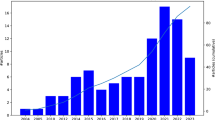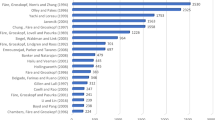Abstract
This paper is dedicated to the memory of E.M.L. Beale. Not a small part of Martin Beale's success in developing and solving large-scale mathematical programs is attributed to the care he took in properly formulating his models.
Our presentation concerns our efforts to also properly formulate a model. Our model is an economic model used for technology assessment. In order for it to be useful, it is important that the dual variables represent as realistically as possible real world prices. This required us to formulate the model as a time-staged economic equilibrium model. Our main result is a proof that an equilibrium formulation using expected aggregate demand can under certain conditions be replaced by one in which the economy is driven by an aggregate utility or objective function, one that promotes economic growth subject to physical flow constraints. We show that such an objective function always exists except for populations consisting of significantly large classes of people whose consumption patterns differ radically one from another. Assuming that the latter is not the case, this equivalent formulation means that mathematical programming software can be applied to efficiently solve the model. This paper summarizes an extensive paper entitled Deriving a Utilty Function for the U.S. Economy [3]. The main theorems are stated without proof.
Similar content being viewed by others
References
K. Arrow and G. Debreu, “Existence of an equilibrium for competitive economy,”Econometrica 22 (1954) 265–290.
R.W. Cottle and G.B. Dantzig, “Complementary pivot theory of mathematical programming,”Linear Algebra and Its Applications 1 (1968) 103–125.
G.B. Dantzig, P.H. McAllister and J.C. Stone, “Deriving a utility function for the U.S. economy,” Systems Optimization Laboratory, Department of Operations Research, Stanford University (October 1987).
G. Debreu,Theory of Value (Yale University Press, Wiley, 1959).
W.M. Gorman, “Community preference fields,”Econometrica 21 (1953) 63–80.
D.W. Jorgenson, L.J. Lau and T.N. Stoker, “The transcendental logarithmic model of aggregate consumer behavior,” in R.L. Baseman and G. Rhodes (eds.),Advances in Econometrics, Vol. 1 (J.A.I. Press, Greenwich, 1982) 97–238. See also [28].
H.W. Kuhn and A.W. Tucker, “Non-linear programming,”Econometrica 19 (January 1951) 50–51 (abstract).
B.A. Murtagh and M.A. Saunders, “MINOS 5.0 user's guide,” Systems Optimization Laboratory, Department of Operations Research, Stanford University, Technical Report SOL 83–20 (December 1983).
H. Scarf, “On the computation of economic equilibrium prices,” in:Ten Economic Studies in the Tradition of Irving Fisher (John Wiley, New York, 1967).
Sen, Amartya, “Social choice and justice: A review article,”Journal of Economic Literature XXIII (December 1985) 1764–1776.
H.R. Varian,Microeconomic Analysis (W.W. Norton & Co. Publishers, New York, 1984). (Pages 135–137 discusses the integrability problem and Slutsky's conditions.)
Author information
Authors and Affiliations
Additional information
The authors wish to thank Kenneth Arrow, Gerard Debreu, Robert Dorfman, Dale Jorgenson and Lawrence J. Lau for their helpful comments.
Research of this report was partially supported by the National Science Foundation Grants DMS-8420623, SES-8518662 and ECS-8617905; U.S. Department of Energy Grant DE-FG03-87ER25028; Office of Naval Research Contract N0004-85-K-0343, Electric Power Research Institute Contract RP 5006-01, and the Center for Economic Policy Research at Stanford University.
Rights and permissions
About this article
Cite this article
Dantzig, G.B., McAllister, P.H. & Stone, J.C. Formulating an objective for an economy. Mathematical Programming 42, 11–32 (1988). https://doi.org/10.1007/BF01589389
Received:
Issue Date:
DOI: https://doi.org/10.1007/BF01589389




